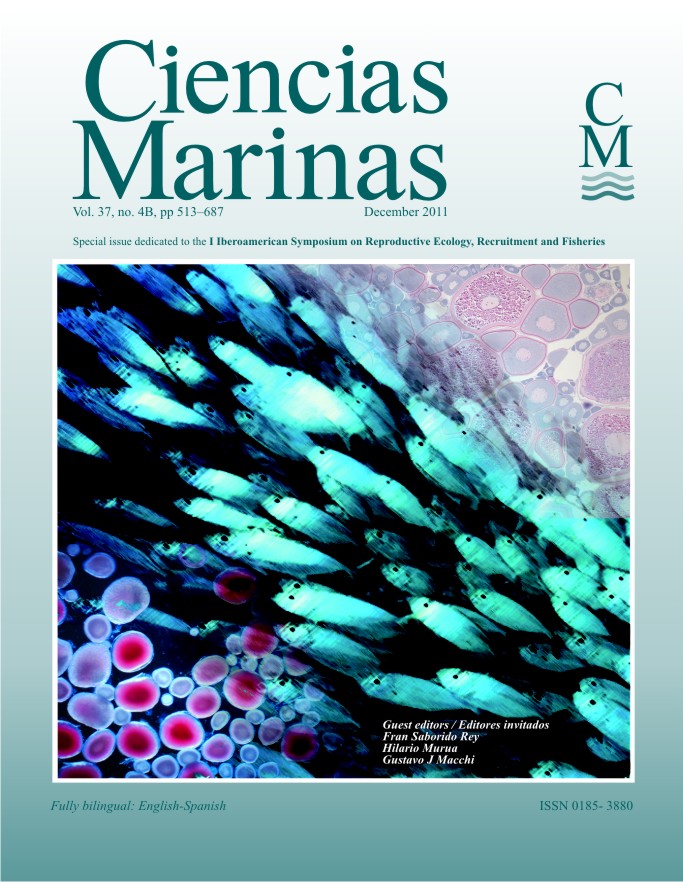Integrating fish size, condition, and population demography in the estimation of Atlantic sardine annual fecundity
Main Article Content
Abstract
Spatial and temporal variability in reproductive parameters was studied in combination with population demography to estimate sardine (Sardina pilchardus) population annual fecundity, as an indicator of its reproductive potential. Samples collected from commercial landings were used to determine the monthly proportion of active females and the duration of the spawning season, while data obtained during the 2002, 2005, and 2008 Daily Egg Production Method surveys were used to analyze the relationship between reproductive parameters (batch fecundity, spawning fraction) and individual biological characteristics (length, gutted weight, condition) for the west and south coasts of Portugal by generalized linear models. Population abundances and biological characteristics obtained per length class during acoustic surveys were subsequently used to integrate individual egg production to population demography. At the individual level, results indicated that the duration of the reproductive season was size-dependent, being shorter for smaller sardines. Batch fecundity was positively related to body size and differed significantly between the years and areas studied, with higher values on the west coast and an increasing trend towards the 2007/2008 spawning season. Mean values of spawning fraction varied significantly with space and time but the poor explanatory relationship obtained by the modelling of the spawning fraction against the individual biological characteristics did not allow the clarification of the factors affecting sardine spawning activity. At the population level, the differences obtained in egg production were found to be related to changes in population abundances as well as to the demographic structure, as larger females contributed proportionally more to the population annual fecundity. These results are in accordance with numerous recent studies indicating that the population reproductive potential may not always be proportional to the spawning biomass.
Downloads
Article Details
This is an open access article distributed under a Creative Commons Attribution 4.0 License, which allows you to share and adapt the work, as long as you give appropriate credit to the original author(s) and the source, provide a link to the Creative Commons license, and indicate if changes were made. Figures, tables and other elements in the article are included in the article’s CC BY 4.0 license, unless otherwise indicated. The journal title is protected by copyrights and not subject to this license. Full license deed can be viewed here.

